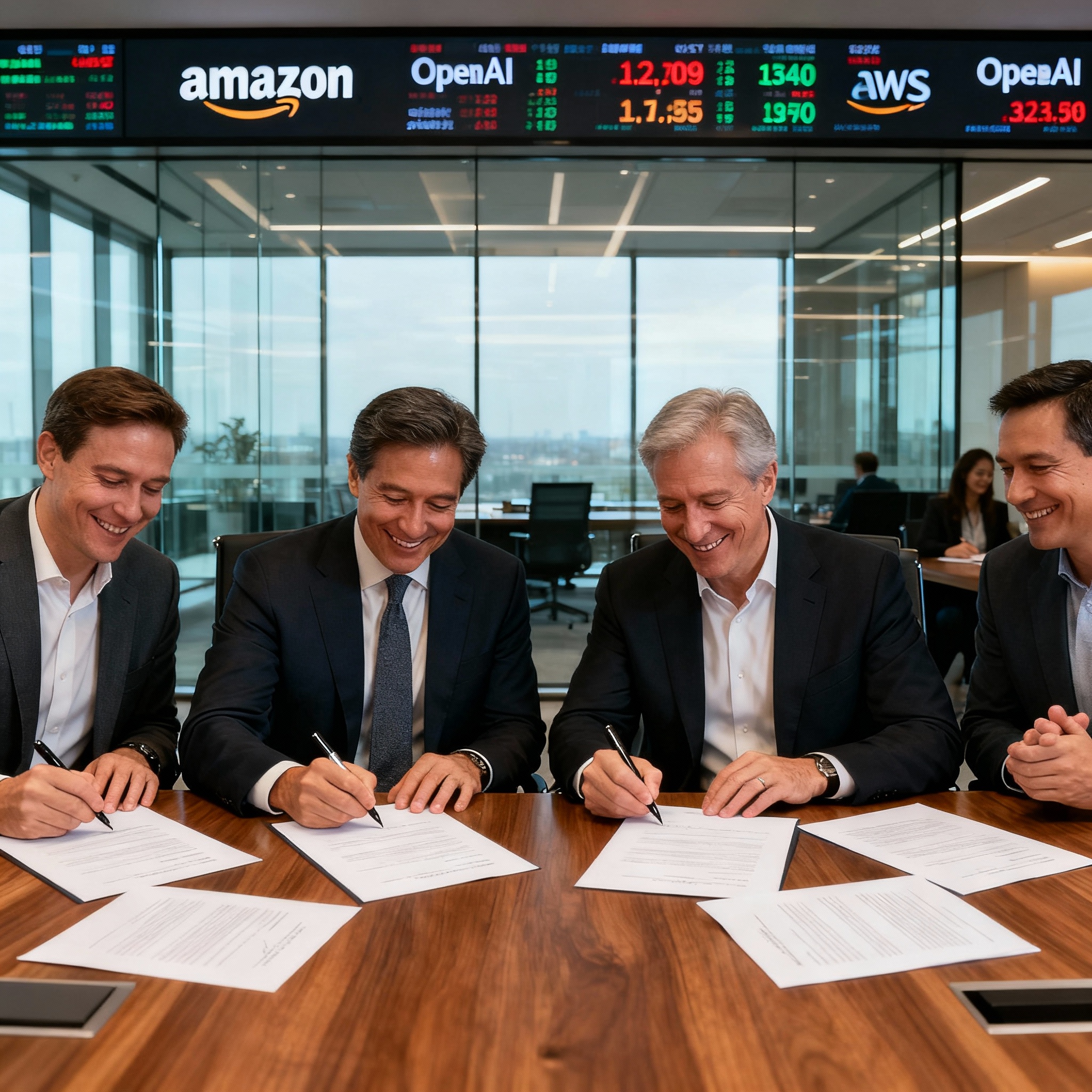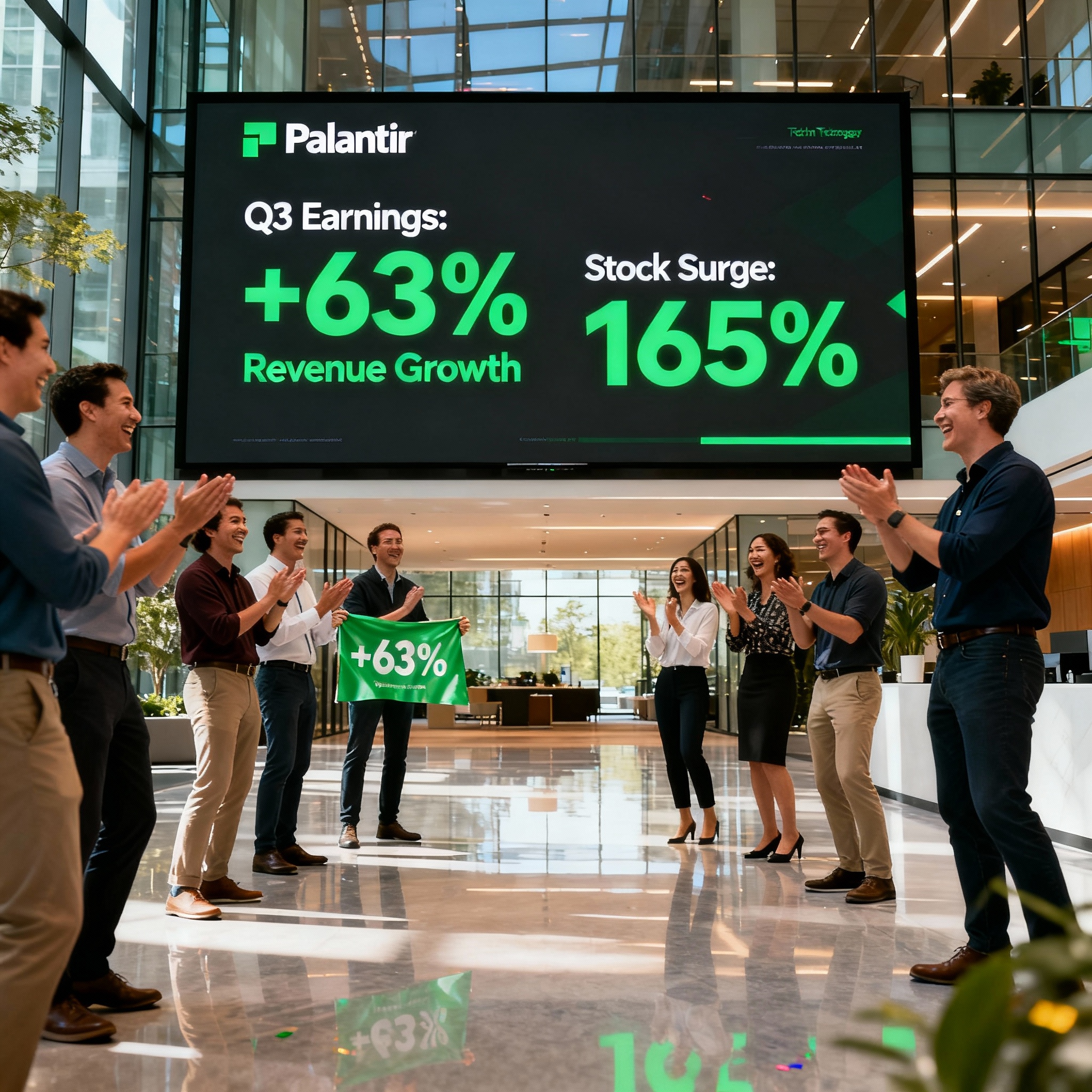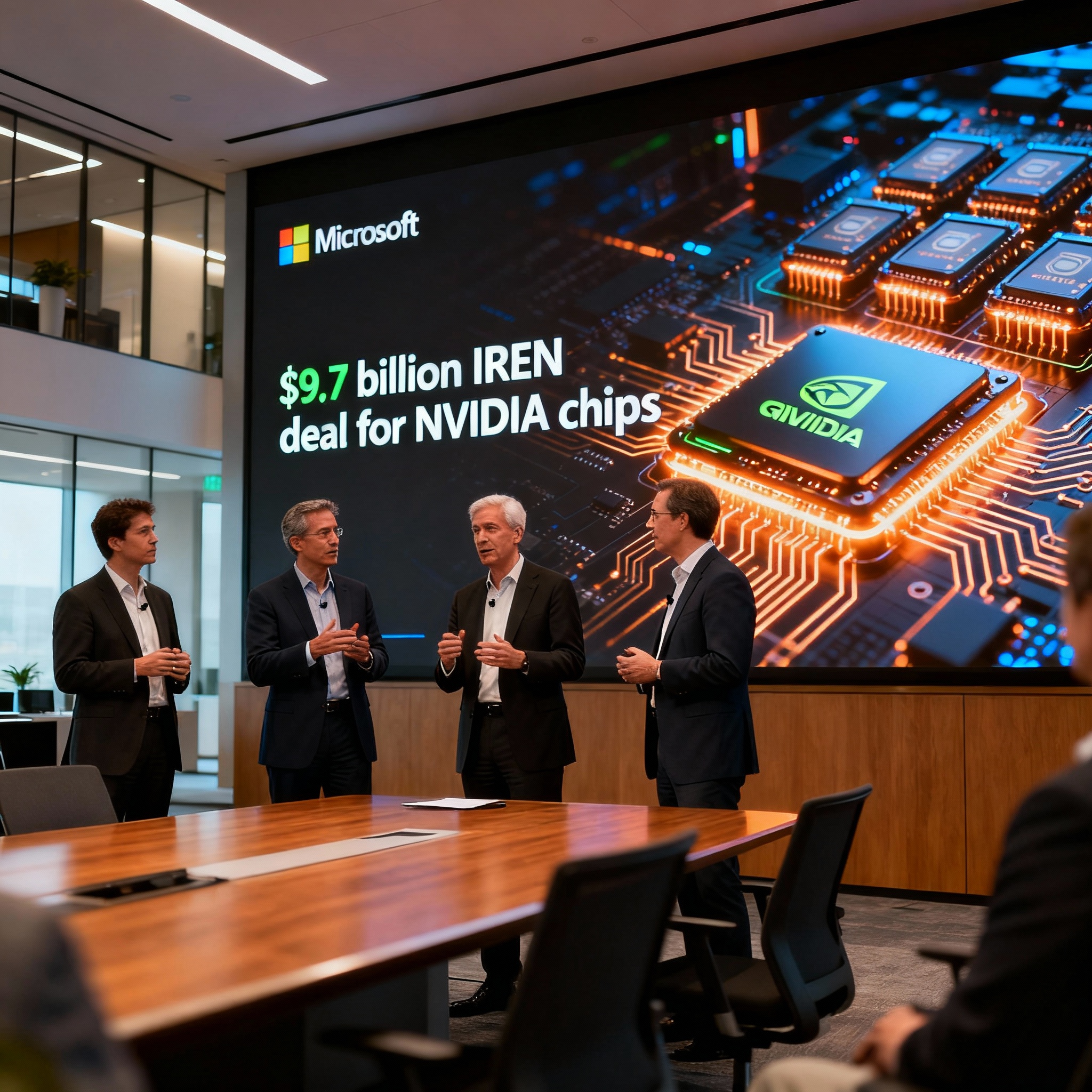AI Investment Bubble? OpenAI's $38B AWS Deal & HSBC's Warning Signal Market Correction: 4. Oct. 2025 AI News

OpenAI's $38 Billion AWS Partnership: A Shift in AI Infrastructure
OpenAI's recent strategic move has sent ripples throughout the tech world, signaling a potential shift in the balance of power within the AI infrastructure landscape. Their newly inked seven-year, $38 billion cloud computing agreement with Amazon Web Services (AWS) marks a significant turning point in the company's operational strategy.

A Break from Microsoft's Embrace?
This monumental deal is widely interpreted as OpenAI's strategic step toward greater independence from Microsoft, especially after a period of restructuring and re-evaluation. While OpenAI has heavily relied on Microsoft's Azure cloud services in the past, this collaboration with AWS diversifies their infrastructure and potentially reduces their dependence on a single provider. This strategic autonomy could provide OpenAI with more flexibility and bargaining power in the long run.
Powering AI with Cutting-Edge Hardware
The partnership with AWS isn't just about cloud storage and basic computing; it's about accessing the bleeding edge of AI-optimized hardware. The agreement immediately grants OpenAI access to NVIDIA's powerful H200 and GB300 AI accelerators, hosted within AWS's advanced data centers. These accelerators are crucial for training and deploying increasingly sophisticated AI models, like ChatGPT, OpenAI's flagship conversational AI, which is designed to engage in natural language conversations, answer questions, and generate various forms of text. This access to state-of-the-art infrastructure promises to accelerate OpenAI's research and development efforts significantly.
Full capacity under the agreement is anticipated by the end of 2026, with the potential for further expansion extending through 2027. This timeline reflects the massive scale of infrastructure required to support OpenAI's ambitious AI projects and the growing demands of the AI industry as a whole.
Market Reactions: A Tale of Two Stocks
The announcement of the deal sent immediate shockwaves through the stock market. Amazon's shares experienced a noticeable surge, reflecting investor confidence in the partnership and the potential revenue boost for AWS. Conversely, Microsoft's stock saw a dip, likely driven by concerns about increased competition and the potential loss of cloud computing market share. This divergence highlights the high stakes involved in the AI infrastructure race and the intense competition between major cloud providers.
Altman's Vision: Democratizing AI
According to Sam Altman, the collaboration with AWS is designed to bolster the overall computing ecosystem, making advanced AI more accessible to a wider audience. This suggests a broader vision beyond OpenAI's internal needs, hinting at a potential future where AWS and OpenAI collaborate to offer AI infrastructure and services to other companies and researchers, fostering innovation across the industry. As AI continues to evolve, tools such as Google AI Studio, a platform that allows developers to experiment with and build AI models, will likely become more crucial for broader adoption.
This OpenAI AWS deal will have a significant and lasting impact, reshaping the AI infrastructure landscape and influencing the development and accessibility of advanced AI technologies for years to come. The OpenAI AWS deal impact is a key event to watch.
HSBC CEO's Warning: AI Capex-Revenue Mismatch and Bubble Concerns

The relentless march of artificial intelligence is prompting stark warnings from financial leaders about a potential AI investment bubble warning. HSBC CEO Georges Elhedery has voiced concerns about the dangerous misalignment between the massive capital expenditure (capex) being poured into AI and the revenue it's currently generating. This imbalance, he suggests, poses a significant risk to the market's stability.
The Consumer Reluctance and Business Caution
Elhedery's warning is rooted in the observation that consumers are largely unwilling to foot the bill for the soaring costs associated with AI development and deployment. Businesses, too, are exhibiting a cautious approach, hesitant to fully commit to AI investments without clear and immediate returns. This reluctance raises questions about the sustainability of the current AI boom. Productivity gains promised by AI may take as long as five years to truly materialize, creating a potentially precarious gap between investment and payback.
The Mammoth Capex of Tech Giants
The sheer scale of investment is staggering. Tech giants like Alphabet, Meta, Microsoft, and Amazon are collectively projected to spend a staggering $380 billion in capital expenditure this year alone. Moreover, OpenAI, the creator of ChatGPT, a revolutionary tool that allows users to generate human-like text for various applications, has reportedly entered into infrastructure agreements worth a mind-boggling $1 trillion with industry titans such as NVIDIA, Oracle, Broadcom, and Amazon. These figures paint a picture of an industry betting big on the future of AI, but the question remains: is the payoff guaranteed?
Expert Concerns and Data Center Projections
Adding to the chorus of caution, General Atlantic CEO William Ford has warned of a potential 'misallocation of capital' within the AI sector. His concerns echo Elhedery's, highlighting the risk of resources being channeled into AI ventures without a corresponding guarantee of profitability. Morgan Stanley projects a significant surge in data center capacity, driven by the demands of AI, while McKinsey estimates that a massive $5.2 trillion will be invested in AI data centers by 2030. This exponential growth in infrastructure further underscores the enormous financial stakes involved and the potential for a significant correction if the anticipated returns fail to materialize. This is a good time to keep up to date with AI News to track these investments.
Palantir's AI Monetization Success: A Contrasting Example
While some corners of the AI market are flashing warning signs, there are companies that are successfully monetizing AI and demonstrating real-world value. A prime example of this is Palantir, whose recent performance paints a different picture from the anxieties surrounding a potential AI bubble burst.
Palantir's Impressive Growth

Palantir's Q3 results showcased a remarkable 63% revenue surge, reaching a staggering $1.18 billion. This growth wasn't just about topline numbers; the company also reported significant expansion in its adjusted operating margins, indicating improved efficiency and profitability. Bolstered by these results, Palantir raised its full-year revenue guidance, signaling confidence in its continued performance. This is in stark contrast to the uncertainty plaguing some other AI ventures.
Beyond Government Contracts: The Power of AI Platforms
What's driving Palantir's success? It's the growing demand for its AI platforms, extending far beyond its traditional government contracts. While Palantir's origins are rooted in serving governmental organizations, its focus on adaptable AI solutions is now resonating strongly with commercial clients. This diversification is key to its sustained growth and resilience, especially considering the cyclical nature of government spending. Think of it this way: Palantir isn't just selling AI; it's providing a customizable, powerful engine for data-driven decision-making that businesses across various sectors can readily utilize.
Commercial Expansion and Investor Confidence
The company's expansion into the commercial sector is a significant factor in its recent gains. Unlike many AI companies that are still in the proof-of-concept phase, Palantir is actively generating revenue through its AI solutions. This has fueled investor confidence, resulting in gains of approximately 165%. However, it's important to note that eToro analyst, Laura Hoy, has cautioned about Palantir's high valuation, suggesting that investors should carefully consider the long-term sustainability of its growth trajectory. Even so, Palantir's current success serves as a powerful counterpoint to the broader market anxieties, illustrating that concrete AI revenue generation can indeed translate into significant investor returns. The company's Palantir AI monetization strategy is based on providing platforms that deliver measurable ROI to its clients.
Palantir's story demonstrates that AI investments can be fruitful when grounded in practical applications and tangible results. As the AI landscape evolves, companies that prioritize real-world impact and revenue generation are more likely to thrive, even if the broader market experiences a correction. This focus on tangible value is what sets companies like Palantir apart and provides a crucial lesson for navigating the future of AI investments. Next, we'll examine the potential triggers for a market correction, and what they might mean for your AI investments.
Microsoft's $9.7 Billion IREN Deal: The Intensifying AI Infrastructure Race
The AI infrastructure race is heating up, and Microsoft is making some serious moves. In a bold play to secure its position, Microsoft recently announced a staggering $9.7 billion agreement with IREN to procure NVIDIA chips, signaling an unprecedented commitment to expanding its AI computing capabilities. This deal underscores the intensifying battle among tech giants to dominate the AI landscape. Like contestants in a high-stakes poker game, each is trying to outbid the others. This also reflects in AI News and the media landscape.

IREN's Stock Soars on Microsoft's Investment
News of the agreement sent IREN's shares skyrocketing, reflecting investor confidence in the company's role in the AI revolution. This surge highlights the immense value that AI-related infrastructure providers now hold, with companies like NVIDIA and IREN becoming critical players in enabling the deployment of advanced AI models. NVIDIA, in particular, benefits from this surge in demand. You could use a tool like Hugging Face, which works closely with NVIDIA, to understand more about their influence in the AI landscape. Hugging Face is a leading open-source platform for machine learning, providing tools, datasets, and models for developers and researchers.
Microsoft's Aggressive Expansion
Microsoft's investment in NVIDIA chips is directly tied to its ambitious plans to aggressively expand its AI computing capacity. This expansion is crucial for supporting the growing demand for its AI services, including Microsoft Copilot. Microsoft Copilot is an AI companion designed to boost productivity and creativity across various applications. The deal closely follows Microsoft's announcement that it intends to double its global data center network, indicating a holistic approach to building out the infrastructure required for AI dominance. This move reflects a strategic vision to create a robust and scalable AI ecosystem.
Capital Expenditures and Profitability Concerns
However, this massive investment comes at a cost. Microsoft's quarterly capital expenditures have reached a whopping $34.9 billion, exceeding previous guidance. While demonstrating a strong commitment to AI, these expenditures have also sparked concerns about the company's profitability, leading to a slight decline in Microsoft's stock. Investors are closely watching whether the long-term benefits of these AI investments will outweigh the short-term financial strain. It's a delicate balancing act between growth and maintaining healthy profit margins.
Microsoft's substantial investment in AI infrastructure signifies the strategic importance of AI in the tech industry's future. While short-term profitability concerns exist, the potential long-term rewards of leading the AI revolution are undoubtedly driving these bold financial decisions. This investment is not just about technology; it's about positioning Microsoft at the forefront of a transformative era. To stay ahead, consider checking our AI News section for the latest updates.
USC's AI-Powered Mineral Discovery: AI for National Strategic Interests
While Wall Street debates market corrections and tech giants ink mega-deals, AI is quietly revolutionizing fields far removed from Silicon Valley, with implications that reach the heart of national strategic interests. Take the University of Southern California (USC), for instance, where researchers are using AI to unearth a hidden wealth of critical minerals, a move that could reshape global supply chains and bolster national security.
DIGMAPPER: AI's Geological Eye

The USC's DIGMAPPER project showcases AI's ability to extract and interpret vast quantities of data. The project leverages AI algorithms to analyze geological maps, transforming what was once a manual, time-intensive process into an efficient, AI-driven pipeline. This initiative, part of the broader CriticalMAAS (Critical Minerals as a Service), is dramatically accelerating the pace of mineral discovery.
From Manual Labor to AI-Driven Discovery
Traditionally, identifying potential mineral deposits meant sifting through countless maps and geological reports. CriticalMAAS flips this script, employing AI to construct a comprehensive knowledge graph. This graph, powered by the MinMod (Mineral Model) system, not only compiles existing geological data but also uses predictive modeling to pinpoint previously undiscovered mineral deposits with remarkable accuracy. For example, you could use a tool like Google AI Studio for machine learning to build and deploy custom AI models that analyze geological data.
A Step Towards Mineral Independence
One of the most significant benefits of this AI-driven approach is the potential to reduce dependence on foreign mineral supplies. Critical minerals are essential for various industries, including electronics, defense, and, crucially, the clean energy sector. By identifying domestic sources of these minerals, the U.S. can mitigate supply chain vulnerabilities and ensure a more secure future.
Powering the Clean Energy Transition
The clean energy transition hinges on access to a stable supply of critical minerals like lithium, cobalt, and rare earth elements. These materials are vital for manufacturing batteries, solar panels, and wind turbines. USC's AI-powered mineral discovery efforts are thus not only a matter of national security but also a crucial component of a sustainable energy future. This also ties into innovations with Google Cloud AI.
AI: A New Front in Geopolitical Competition
In an era of increasing geopolitical competition, AI is emerging as a key strategic asset. The ability to leverage AI for resource discovery, as demonstrated by USC's DIGMAPPER project, underscores the importance of investing in AI research and development. It's a clear signal that the future of resource management will be increasingly shaped by artificial intelligence, emphasizing the need to stay at the forefront of AI innovation. Staying up to date with AI News is critical for those looking to stay ahead.
Analysis: AI's Revenue Reality Check and Market Correction Signals
The AI revolution is here, but is it built on solid ground, or a foundation of overblown expectations? A fundamental contradiction lies at the heart of the AI boom: the need for massive infrastructure investments juxtaposed against the often-uncertain and slow-to-materialize revenue streams.
The Trillion-Dollar Bet: Infrastructure vs. Income
The scale of investment is staggering. OpenAI's recent $38 billion deal with AWS, coupled with Microsoft's partnership with IREN to power its AI ambitions, underscores the unprecedented capital expenditure being poured into compute and data infrastructure. Think of it like building a fleet of Formula 1 race cars – you need the best engines, the sleekest designs, and a pit crew ready to handle anything. But what if the races don't pay out as expected? What if the sponsorships fall through? That's the question hanging over the AI landscape right now. HSBC's CEO, Noel Quinn, has publicly warned of a potentially dangerous misalignment between capital expenditure and actual revenue generation in the AI sector. He's essentially saying, "We're spending like crazy, but are we making enough back?"
Palantir: A Beacon of Monetization
In contrast to the speculative frenzy surrounding many AI ventures, Palantir stands out as a company that has successfully translated AI capabilities into tangible revenue. Their success underscores a crucial point: the market rewards proven AI monetization. Palantir offers platforms like Palantir AIP which brings the power of AI to your enterprise, connecting large language models to your proprietary data. Instead of just promising a future utopia powered by AI, they're delivering real solutions that businesses are willing to pay for.
Show Me The Money: Justifying the AI Investment
Ultimately, the long-term sustainability of the AI market hinges on companies demonstrating real, verifiable revenue generation to justify the massive capital expenditures. It's not enough to have the coolest algorithms or the most impressive demos. As Quinn of HSBC suggests, the pressure is on to transform cutting-edge AI into bottom-line impact. If the returns on these investments fail to materialize, we could see a significant AI market correction, a scenario where inflated valuations come crashing back down to earth. Keep up with the AI News to understand the latest market trends.
Companies must prove that AI isn't just a technological marvel, but a powerful engine for economic growth. Only then can they truly justify the extraordinary investments that are shaping the future of technology.
🎧 Listen to the Podcast
Hear us discuss this topic in more detail on our latest podcast episode: https://open.spotify.com/episode/5bqi1EAexUns0oUacgCt5i?si=QXsGk5YrS7SwWE6MsNIcKg
Keywords: AI, Artificial Intelligence, OpenAI, AWS, Microsoft, HSBC, Palantir, NVIDIA, AI Investment, AI Infrastructure, Data Centers, Capex, Revenue, Market Correction, Critical Minerals
Hashtags: #AI #ArtificialIntelligence #Investment #Tech #DataScience
For more AI insights and tool reviews, visit our website https://best-ai-tools.org, and follow us on our social media channels!
Website: https://best-ai-tools.org
X (Twitter): https://x.com/bitautor36935
Instagram: https://www.instagram.com/bestaitoolsorg
Telegram: https://t.me/BestAIToolsCommunity
Medium: https://medium.com/@bitautor.de
Spotify: https://creators.spotify.com/pod/profile/bestaitools
Facebook: https://www.facebook.com/profile.php?id=61577063078524
YouTube: https://www.youtube.com/@BitAutor
Recommended AI tools
Nomi.ai
Conversational AI
Empowering AI Conversations
StockCake
Image Generation
Baking the perfect stock analysis for you
StockStory
Data Analytics
Uncover the narrative behind the numbers.
AInvest
Data Analytics
Empowering your investment decisions with AI
EarnBetter
Productivity & Collaboration
Maximize Your Earnings with EarnBetter
Intapp DealCloud
Data Analytics
Find, win, and execute more business with Intapp DealCloud


